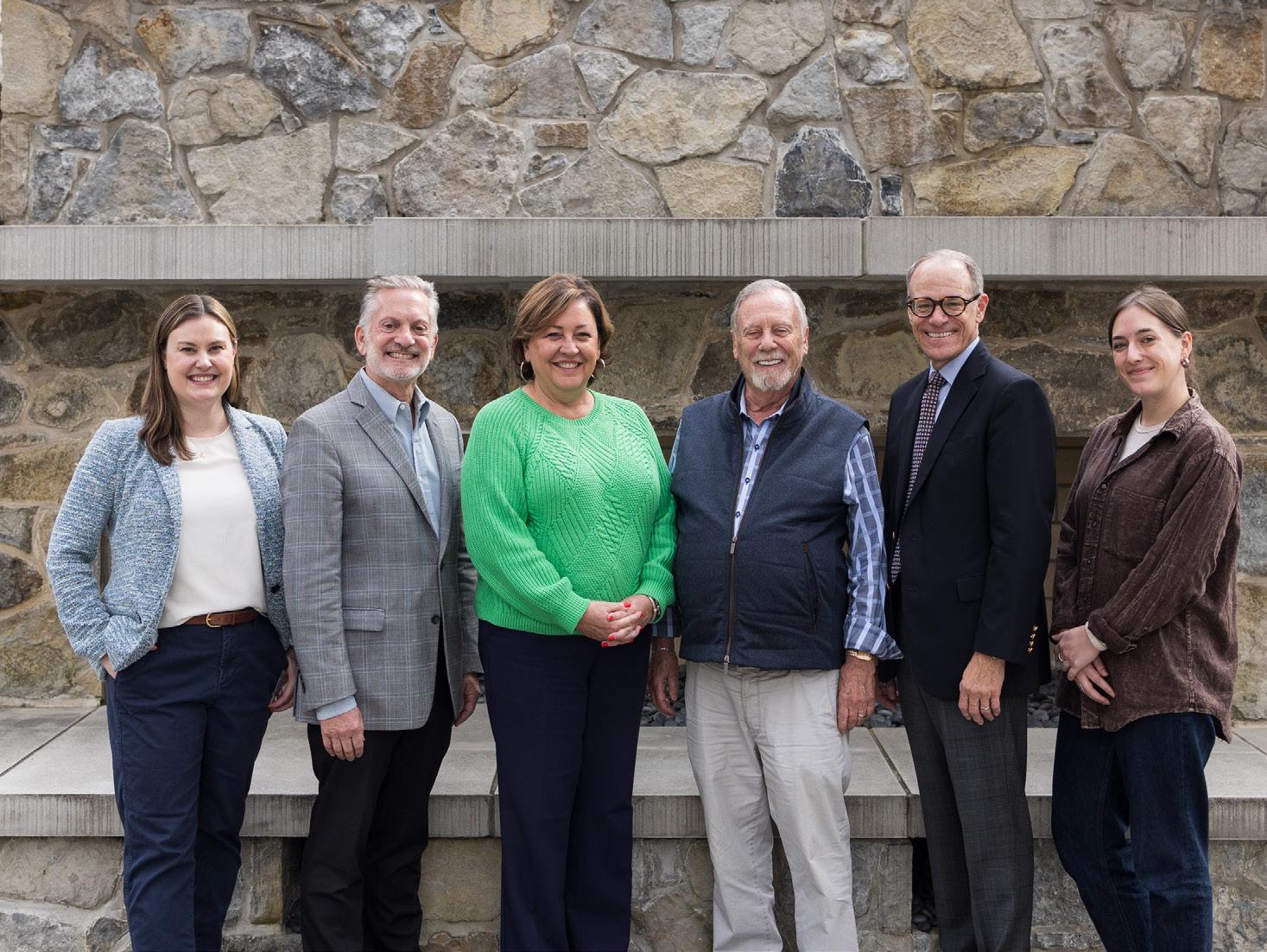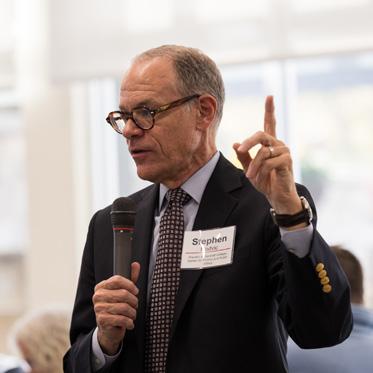








November 20 and December 9, 2024
Final Report
Hosted by:






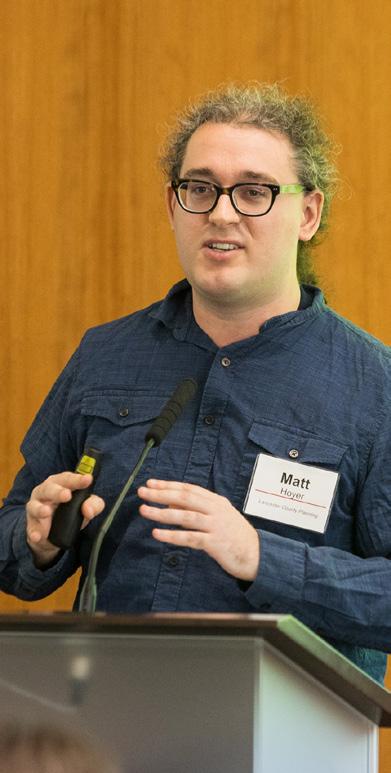

Report prepared by:
Stephen K. Medvic, Ph.D., Kunkel Professor of Government & Director, Center for Politics and Public Affairs, Franklin & Marshall College
This report, as well as the briefing document from these workshops, can be found at: HighFoundation.org/impact

Since our founding, the High Foundation has been committed to fostering thriving communities through meaningful investment, collaboration, and innovation. Over the years, we have recognized that ensuring Lancaster County remains a place where all residents can live, work, and flourish requires tackling some of our most pressing challenges head-on.
One of those challenges is affordable housing. As part of our commitment to our two High Impact Areas—affordable housing and the environment—we have sought ways to understand and address the barriers that prevent our community from meeting its housing needs. That’s why, in partnership with Hourglass and Franklin & Marshall College’s Center for Politics and Public Affairs, we convened two deliberative workshops on affordable housing.
These workshops brought together municipal officials—who are key decision-makers in shaping Lancaster County’s housing future—to examine the barriers to affordable housing and explore possible solutions. We approached this effort with humility, recognizing that we cannot solve this challenge alone. We need our municipal leaders at the table, engaging in conversations about zoning, land use, and local policies that influence housing availability and affordability.
Several important takeaways emerged from these discussions. First, there is widespread recognition that affordable housing is a significant issue for Lancaster County. Just as importantly, there is also a growing sense that we can do something about it. Two key themes surfaced repeatedly:
1. Zoning reform is a crucial tool that municipalities can use to encourage housing solutions that meet the needs of their communities.
2. Public education is essential to shifting perceptions and overcoming barriers to affordable housing, and this is an area where all of us—leaders, residents, and organizations—can play a role.
These insights are not just theoretical; they provide a roadmap for action. As a next step, we will share these learnings with the broader community and statewide partners, ensuring that this conversation extends beyond the walls of the workshop. At the High Foundation, we will continue refining our strategy to drive the greatest impact through advocacy, grantmaking, and innovative solutions.
Tackling a challenge as complex as affordable housing requires longterm commitment and collective effort. We are grateful to the municipal leaders who joined us in these workshops and to our partners who helped make them possible. Together, we have the opportunity to create a more thriving community for all.
Onward to action.
Sincerely,
S. Dale High Chair, High Foundation

On November 20 and December 9, 2024, a total of 42 participants attended a deliberative workshop on affordable housing hosted by the High Foundation, Franklin & Marshall College’s Center for Politics and Public Affairs, and Hourglass.
All 60 of Lancaster County’s municipalities were invited to attend the workshops and were encouraged to send two participants – a staff person and an elected official. Twenty-five of Lancaster County’s 60 municipalities were represented. Urban municipalities were slightly overrepresented at the workshops.
Participants were provided with briefing materials on affordable housing prior to the workshop.
Two sessions were held during the workshop. One examined barriers to affordable housing and the other explored solutions. Each session began with presentations by experts in the field of housing, generally, and affordable housing, specifically. Expert presentations were followed by small group deliberations.
Deliberations on barriers to affordable housing identified several factors that make building affordable housing in the municipalities difficult. Zoning ordinances and public opposition were mentioned frequently, as was a lack of space for new development and the need for more transportation options and additional infrastructure. With respect to public opposition to affordable housing, a number of participants noted that there are widespread misperceptions of who utilizes affordable housing and what the consequences of building affordable housing might be for a community.
Deliberations on solutions revealed that participants thought zoning reform and educational efforts were most promising. Suggested changes to zoning ordinances included allowing for accessory dwelling units (ADUs), eliminating or reducing minimum habitable space requirements (which allow for the availability of tiny homes, which was a popular solution among the participants), reducing minimum lot size requirements, and allowing for greater density. To build public support for affordable housing, participants urged greater communication and educational efforts in the municipalities.
Participants were given surveys prior to and following the workshops. Thirty-three (33) participants completed both the pre- and post-workshop surveys.
Survey results indicate that, following the workshop, a majority of participants (55%) thought housing was the top issue facing their municipality, a slight increase in the number who thought so before the workshop. Those who came to believe that there are many actions municipal governments can take to address affordable housing increased from 18% before the workshop to 39% afterward and the number who believed there were few actions that can be taken fell from 24% to 12%. Relatively large shifts in opinion occurred in the levels of support for building more houses, condos, and apartment buildings at all price points as well as for building affordable houses, condos, and apartments; for zoning, permitting, or regulation changes to allow more housing; and for allowing ADUs in participants’ municipalities.
The High Foundation, in collaboration with Hourglass and the Center for Politics and Public Affairs at Franklin & Marshall College, hosted two “deliberative workshops” on affordable housing on November 20 and December 9, 2024. These workshops provided local municipal leaders with information about housing, and affordable housing specifically, including expert testimony about barriers to the development of affordable housing and potential approaches to overcoming those barriers. Municipal leaders were given the opportunity to discuss barriers and solutions in small-group, deliberative sessions.
In a typical deliberative forum, a randomly-selected, representative group of community members is brought together to deliberate about a public policy challenge and to generate recommendations for how to address the challenge. Before convening, participants are provided with a briefing document that offers background information about the topic to be discussed. At the forum, experts are present to answer questions and participants are guided through their deliberation by trained facilitators. Participants are given a stipend to attend the forum and expenses for travel, child care, etc. are covered.
The High Foundation deliberative workshops were similar to a deliberative forum with a few key exceptions. First, participants were not randomly selected. Instead, all 60 municipalities in Lancaster County were invited to send up to two representatives to one of workshops. Second, participants were not compensated. And, finally, participants did not generate recommendations. Nevertheless, opportunities to hear from experts (both in person and in the form of a briefing document) and to deliberate about affordable housing were provided. This combination of informational and interactive (i.e., deliberative) goals make the workshops a variation on the more common deliberative forum.
Before the workshops, participants were given briefing documents that provided factual information on topics such as:
• Lancaster County’s Current Housing Stock
• Housing Types, Density, and Land Use Efficiency
• How Zoning & Regulations Can Impact Housing
• Affordable Housing Definitions
• Lancaster County Affordable Housing Case Studies
Access these briefing documents at HighFoundation.org/impact.
There were 27 participants in attendance at the November 20th workshop (including one representative from Lancaster County Planning) and 15 at the December 9th event. Those participants represented 25 of the county’s 60 municipalities. According to the Center for Rural Pennsylvania’s definition of a “rural” municipality, just under one third (32 percent) of Lancaster County municipalities are rural.1 Of the municipalities represented at the workshops, 24 percent were rural. In other words, municipalities with higher levels of population density (i.e., urban municipalities) were slightly overrepresented at the workshops.
Following opening remarks and a keynote address2, each workshop was divided into two sessions. The first session of the day considered barriers to affordable housing. Presentations from experts covered zoning and land use regulations, construction costs and housing regulations, and public opposition to affordable housing projects (i.e., NIMBYism).3 Those presentations were followed by a case study from Ben Lesher (President and Founder, Parcel B Development Co.) on his experience attempting to develop a mixed-use apartment complex in Lancaster City called The Yards.
The second session examined affordable housing solutions and innovations. Presentations from experts covered municipal commitments to housing needs, redevelopment, home ownership models, and community engagement and education.4 A case study on tiny homes and accessory dwelling units (ADUs) was offered by Abby Shank (CEO and Founder, Tiny Estates).
Following the expert panel and case study, each session allowed for roughly an hour of small group deliberations. The groups consisted of three or four participants (plus a facilitator and a scribe). What follows is a summary of the deliberations as captured by scribes at each table. Unless otherwise noted, summaries combine the deliberations for both workshop dates.
1 “A municipality is rural when the number of people per square mile in the municipality is fewer than 291 or the municipality is in a rural county and has fewer than 2,500 residents. All other municipalities are considered urban.” Center for Rural Pennsylvania, https://www.rural.pa.gov/data/rural-urban-definitions (accessed December 29, 2024).
2 The keynote address on November 20 was given by Orlando Almonte, Pennsylvania Deputy Secretary of Policy and Planning; on December 9 it was given by Rick Vilello, Pennsylvania Deputy Secretary of Community Affairs and Development.
3 The expert panel for Session 1 consisted of (in order of topics covered):
• Matt Hoyer, Senior Planner, Lancaster County Planning
• Tony Seitz, Vice President of Development, High Associates Ltd
• Dana Hanchin, President and CEO, HDC MidAtlantic
4 The expert panel for Session 2 consisted of (in order of topics covered):
• Tara Hitchens, Assistant Township Manager, East Lampeter Township
• Michaela Allwine, Associate Director of Development, Völker
• José Lopez, CEO, SACA Development
• Chad Martin, Executive Director, Chestnut Housing
Participants considered the following four questions during this deliberative session:
• How does the issue of affordable/workforce housing impact your community?
• What concerns do you hear from residents about affordable housing? Do you think these concerns are valid? Why or why not?
• What are the main barriers to building more affordable or workforce housing in your municipality?
• What role do you believe local government should play in addressing housing affordability?
With respect to the way affordable/workforce housing impacts the communities of the participants, many participants mentioned the instability caused by people moving frequently when they can’t afford housing in a community. In addition, several said that younger people are having a hard time staying in, or moving to, local communities because of housing costs. Demand seems to be increasing from those moving into the area from elsewhere and a number of participants said there is simply not enough land, often because of efforts to preserve farmland, to build new housing.
Participants were quick to note that in many municipalities there is opposition to affordable housing. Often, this is due to misperceptions of what affordable housing is and of those who utilize such housing. There is also apprehension about the consequences of greater density, including increased traffic and the potential for disorder. In general, participants noted that some residents in their municipalities are worried about changes to the nature of the community and to quality of life that could be caused by the development of affordable housing.
Participants also began to identify various needs related to affordable housing such as better transportation, jobs near housing complexes, and better infrastructure (e.g., water, sewer). These are themes that recurred throughout the workshop.
With respect to the concerns municipal leaders hear about affordable housing, they again noted worries about the changing nature of communities and opposition to density (and an aversion to large apartment buildings). Many noted opposition to the loss of farmland in the county. Many also pointed to perceptions of those who are in need of affordable housing as individuals who don’t work and who may engage in criminal behavior. Others noted concerns about the potential for decreasing property values and quite a few mentioned increased pressure on municipal services (e.g., more children in local schools).


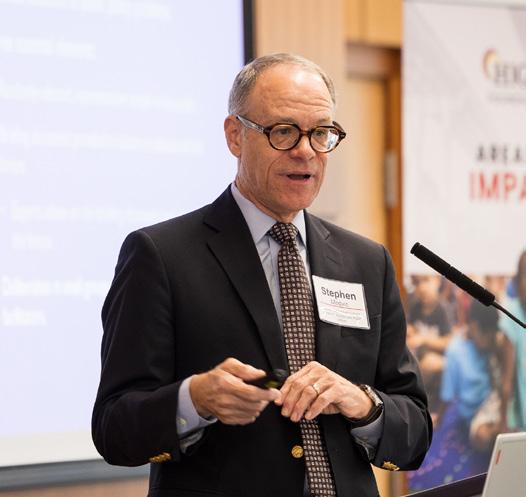

Participants didn’t appear to speak to the validity of these concerns, except to acknowledge that perceptions of those in need of affordable housing are largely misperceptions. A few maintained that “affordable housing” might be an unhelpful term for the kind of housing in question. The term, it was suggested, might encourage misperceptions of the occupants of such housing and likely contributes to its stigma.
Among the main barriers to building affordable housing in the various municipalities were, first and foremost, zoning ordinances. There was widespread agreement that current zoning and land use ordinances are difficult to change and discourage all but single-family dwellings on relatively large lot sizes. In addition, many participants claimed a lack of space for new development as well as infrastructure limitations. Of course, public opposition – of both the BANANA (“build absolutely nothing anywhere near anyone”) and NIMBY (“not in my back yard”) varieties – was commonly mentioned as an obstacle. Several participants also acknowledged the costs to developers of affordable housing are often prohibitive. These are a number of drivers of these costs, including regulations at the state and federal levels.
When asked about the role of local government in addressing housing affordability, the most common response was that municipalities could work closely with developers to offer incentives for development and could “cut red tape” and offer more flexibility with respect to zoning. The second most common suggestion was to educate the public and address the “anti-growth” mindset that exists in many communities. Several participants argued for visionary and innovative leadership at the municipal level and urged local leaders to advocate for affordable housing. Of course, several participants mentioned revising zoning ordinances and changing other regulations as well as upgrading infrastructure.
The aforementioned themes were reiterated at the plenary session in which small groups reported on their main takeaways from the first deliberation. Perhaps the most common topics mentioned were the need for more (and better) transportation options and additional infrastructure; the lack of space for new development; the necessity of zoning that can accommodate affordable housing units; and public opposition to affordable housing. More than one group encouraged the use of a term other than “affordable” housing (e.g., “workforce” housing). And at least one group called for hosting deliberative forums in the municipalities.
Participants considered the following four questions during the second deliberative session:
• What innovative solutions could help overcome the housing barriers we discussed earlier?
• What zoning or regulatory changes could your municipality implement to encourage the development of affordable/workforce housing?
• How can your municipality collaborate with neighboring communities to address housing challenges regionally?
• What steps can be taken to build public support for more affordable housing in your community?
The innovative solutions that most resonated with participants were tiny homes (and the development of tiny home communities) and adaptive reuse. Some thought there might be challenges to the tiny home model but nevertheless found the idea intriguing. Other popular approaches were the approval of ADUs, changes to zoning ordinances and more flexible use of zoning variances, and educational efforts for both the public and municipal leaders. Finally, a few participants mentioned the reliance on incentives for developers and at least one mentioned homeownership programs, cooperative living arrangements, easier approval processes, and regional planning.
With respect to zoning and regulatory changes that could be made by the municipalities, several were mentioned a number of times. It should be noted, however, that none were mentioned by a majority of the small groups. The most common ideas were allowing ADUs, eliminating or reducing minimum habitable space requirements, reducing minimum lot size requirements, and allowing for greater density or providing density bonuses to developers (though one participant noted that, for many in the community, “density is a dirty word”). Other suggested zoning/regulatory changes included adjusting building height requirements, revising parking requirements, and simplifying the permitting process.
Participants were asked how municipalities can collaborate to address housing challenges regionally. Among the top suggestions were information sharing (and holding “more workshops like this”) and regional zoning and planning processes (though one participant noted that, while ideal, regional zoning may not be practical). At least two groups suggested the development of housing projects near municipal boundary lines and utilizing small area plans more often. Other ideas included increasing the number of shared services provided, sharing maintenance of infrastructure, standardized reporting of housing development data, increased funding for transit, and combining certain municipal staff positions related to housing.


To build public support for affordable housing in their communities, the participants most commonly called for more communication and educational efforts. Those efforts, at least one participant noted, should include educating municipal leaders; another argued that trust of local governments must be re-established. As part of the communication/education process, several participants advocated for deliberative forums at the municipal level and for telling the stories of those who rely on affordable housing (through short videos or podcasts). Other suggested recruiting business and church leaders to advocate for more affordable housing, offering open house tours of affordable housing complexes, and gathering data on affordability and access to housing at the municipal level.
When reporting on their deliberations, groups highlighted the need for better communication and education more than any other theme. Almost as frequently, the groups identified the need for zoning reform and model zoning ordinances. Other common themes were the use of incentives for developers; the creation of tiny home communities; allowing for ADUs; reducing minimum lot sizes for homes; the potential benefits of municipal collaboration on planning, building projects, and utilities; the value of telling the stories of those who utilize affordable housing; and relying on businesses and churches to advocate for affordable housing.
Participants were asked to complete a survey on housing prior to arriving at the workshop and were given the same survey at the end of the workshop. Thirty-three (33) of the 42 participants completed both surveys, allowing for “before and after” comparisons. The survey questions, with responses, can be viewed as Appendix A of this report.
There were a few notable results from the survey. Following the workshop, a majority of participants (55%) selected housing as the top issue facing their municipality (Q1, which was slightly higher than the 48% who had listed it as the top issue prior to the workshop.)5 After the workshop, every participant either strongly or somewhat agreed that Lancaster County, as a whole, needs more housing (up from 91% agreement prior to the workshop; Q3).
5 A shift of seven percentage points represents roughly 2 respondents (given that 33 respondents completed both surveys and, thus, each respondent represents a little over 3 percent of the total).
Interestingly, participants became slightly more concerned with the availability of housing, generally, and slightly less concerned with affordable housing, specifically, following the workshop. Prior to the workshop, 39% thought housing, in general, was a major problem (Q4) and only 24% though it either was a minor problem or not a problem at all; after the workshop, 47% thought housing was a major problem and only 9% though it was a minor problem (no one thought it was not a problem). However, those saying affordable housing, specifically, was a major problem fell from 61% to 39% (Q6). It should be noted that no one thought affordable housing wasn’t a problem at all, and the number saying it was only a minor problem also fell, from 9% to 3%. In other words, affordable housing continued to be viewed as a problem in the participants’ municipalities, but it had shifted from a major problem to a moderate one.
One can also see the prioritization of housing availability in Q5. When asked to rank quality, availability, and affordability of housing in order of importance for their municipality, 50% ranked availability first in the pre-workshop survey and 58% did so in the post-workshop survey. Affordability was a close second (at 47%) in the pre- survey but a more distant second in the postsurvey. It’s not immediately clear why the affordability of housing would have fallen as a concern relative to availability following the workshops. It may simply be that participants came to realize that there is tremendous demand for housing at all price points in Lancaster County and there is simply not enough supply.
Regardless of the shift in housing priorities, more participants (61%) believed it is very important for their municipality to address affordable housing (Q7) following the workshop than prior to it (55%) and those who felt it was not important declined from 9% to zero. Indeed, those who came to believe that there are many actions that can be taken by municipal government to address affordable housing - regardless of how important they felt it was to do so (Q8) – increased from 18% to 39% and those who believed there were few actions that can be taken fell from 24% to 12%.
Opposition to more houses, condos, or apartment buildings at all price points (Q9) fell from 20% (somewhat and strongly opposed combined) before the workshop to 3% afterward and those strongly favoring such building increased from 42% to 64%. The numbers were quite similar for building more affordable houses, condos, or apartment buildings (Q10). Relatively large shifts from before and after the workshop were also found with respect to support or opposition to zoning, permitting, or regulation changes to allow more housing (Q11) and to allowing ADUs (Q12) in participants’ municipalities.
However, no change occurred with respect to support or opposition to “missing middle” housing (Q13) and redevelopment of underutilized buildings to add more housing (Q15). Only slight shifts occurred with respect to mixed-use, multifamily housing (Q14) but opposition nearly disappeared (9% to 3%) and those strongly favoring this type of housing increased (53% to 58%). There was essentially no change in the number of participants agreeing (or disagreeing) that “we should work regionally (i.e., across municipalities) to solve housing challenges (Q17), though it should be noted that virtually everyone either somewhat (39%) or strongly (58%) agreed with that sentiment following the workshop.
These workshops on affordable housing provided a valuable opportunity for municipal officials to come together, engage in thoughtful dialogue, and explore both the challenges and solutions to Lancaster County’s housing crisis. Through these discussions, a clear consensus emerged: housing is a critical issue, and municipalities have a role to play in addressing it. Participants identified zoning reform and public education as two key areas where progress can be made, emphasizing that overcoming barriers will require collaboration, leadership, and community-wide engagement.
But this is only the beginning. The insights gathered through these workshops are not meant to sit idle— they are a call to action. The High Foundation, in partnership with our collaborators, will take the next steps to ensure these learnings inform local, county, and state-level efforts by:
• Sharing this report with all 60 municipalities in Lancaster County, ensuring that every local leader has access to these findings and potential solutions.
• Providing the report to key leaders developing the new Housing & Homelessness Plan for Lancaster County and the Housing Action Plan for Pennsylvania, contributing to broader regional and statewide strategies.
• Engaging with Lancaster County’s Coalition for Sustainable Housing, a network dedicated to advancing affordable and equitable housing solutions in our community.
Beyond sharing these findings, the High Foundation will continue to play an active role in elevating affordable and workforce housing as a priority issue in Lancaster County. We remain committed to using our voice, influence, and grantmaking to support organizations and initiatives that drive real change. Additionally, we are exploring new and innovative approaches to accelerate solutions—ones that could position Lancaster County as a model for affordable housing innovation.
The momentum from these workshops underscores a growing commitment among municipal leaders to take meaningful steps toward solving Lancaster’s housing challenges. As we move forward, we invite others—elected officials, businesses, nonprofit leaders, and community members—to join us in this effort. Together, we can make Lancaster County a place where everyone has access to safe and affordable housing.
Thank you to the following municipalities for participating in these workshops:
Adamstown Borough
Caernarvon Township
City of Lancaster
Columbia Borough
Denver Borough
Earl Township
East Donegal Township
East Hempfield
East Lampeter Township
Ephrata Borough
Lancaster County Planning
Leacock Township
Lititz Borough
Manheim Borough
Manheim Township
Millersville Borough
Mountville Borough
Paradise Township
Penn Township
Quarryville Borough
Rapho Township
Salisbury Township
Strasburg Borough
Warwick Township
West Hempfield
West Lampeter Township
1. What do you think are the top issues facing your municipality today? (Please select up to three)
1
2. Would you say that Lancaster County is growing too fast, about right, or too slow?
3. Do you agree or disagree that Lancaster County, as a whole, needs more housing?
Agree
Disagree Strongly Disagree
4. How significant do you believe the issue of housing, in general, is in your municipality?
5. How would you rank the following in terms of their importance for your municipality?
6. How significant do you believe the issue of affordable housing is in your municipality?
Problem
Problem
Problem
7. In your opinion, how important is it for your municipal government to address affordable housing?
Important
Important Not Important Not a Problem
8. Regardless of how important you believe it is for your municipal government to address affordable housing, to what degree do you believe there are actions that can be taken at the municipal level to address this issue?
There are many actions that can be taken.
There are some actions that can be taken.
There are a few actions that can be taken. There are no actions that can be taken.
9. Do you favor or oppose building more houses, condos or apartment buildings at all price points in your area?
Favor
Favor
Oppose Strongly Oppose
10. Do you favor or oppose building more affordable houses, condos or apartment buildings in your area?
Strongly Favor
Favor
Somewhat Oppose
Strongly Oppose
11. Do you favor or oppose zoning, permitting, or regulation changes to allow more housing development in your municipality?
Strongly Favor
Favor
Somewhat Oppose
Strongly Oppose
12. Do you favor or oppose allowing Accessory Dwelling Units (ADUs) in your municipality?
Favor
Strongly Favor Somewhat Oppose Strongly Oppose
13. Do you favor or oppose allowing townhomes and duplexes (a.k.a. “missing middle” housing) in your municipality?
Strongly Favor
Favor
Somewhat Oppose Strongly Oppose
14. Do you favor or oppose allowing mixed-use, multifamily housing in your municipality?
Strongly Favor
Somewhat Favor
Somewhat Oppose
Strongly Oppose


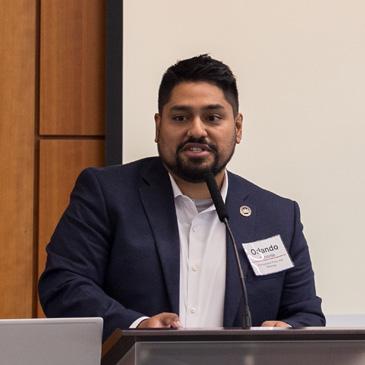

15. Do you favor or oppose using redevelopment to add more housing to your municipality (e.g., developing underutilized buildings like former schools, hospitals, malls, etc.)?
Strongly Favor
Favor
Somewhat Oppose
Strongly Oppose
16. How likely are you to take action or to advocate for housing policy changes in the next 12 months?
Likely
Likely
Unlikely
17. Do you agree or disagree that we should work regionally (i.e., across municipalities) to solve housing challenges?
Agree
Agree
Somewhat Disagree
Strongly Disagree

